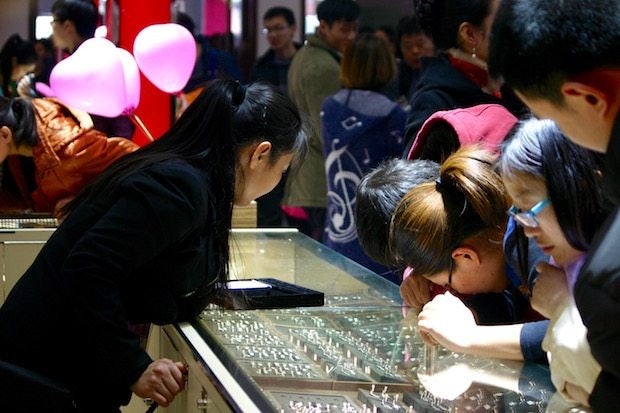
This article was published earlier in our weekly newsletter. Sign up through our “Newsletter Sign Up” box on the right.
As China’s economic growth slows and its stock market remains turbulent, consumers are still willing to spend as confidence remains high, according to recent data.
Nielsen’s newly released “China Consumer Confidence Index” for Q4 of 2015 find that Chinese consumer confidence actually went up a point during the time period, despite the fact that China’s economic growth rate slowed to a 25-year low in 2015 and the stock market remained volatile. The confidence rating of 107 is higher the the global average of 97, and is above the United States’ 100 and Germany’s 98. In addition, Nielsen finds China currently has one of the lowest levels of “recessionary sentiment,” or a belief that the country is in recession in the most recent quarter compared to the previous one. At 29 percent, this sentiment was far lower than the United States, where 47 percent believed they saw a recession.
The economic turbulence did have an effect on Chinese recessionary sentiment, however, as it increased 2 percent from Q3. In addition, the economy was listed as the biggest concern for consumers surveyed in the Asia-Pacific region, with 29 percent expressing their worry about it. This was followed by work/life balance at 27 percent and health at 25 percent.
Retail sales growth numbers echo the idea that consumption is still high, but there may be concern for the future. While retail grew at a healthy 11.1 percent year-on-year in December, it slightly missed a prediction of 11.3 percent from Reuters.
For luxury brands, this growth has been unequal, with some high-end brands seeing much stronger growth than others in 2015. The question for the luxury market in 2016 is whether the combination of devalued currency, shaky stocks, and slowing growth will damage consumer optimism among upper-middle class and affluent consumers that are so necessary for brands’ bottom line.